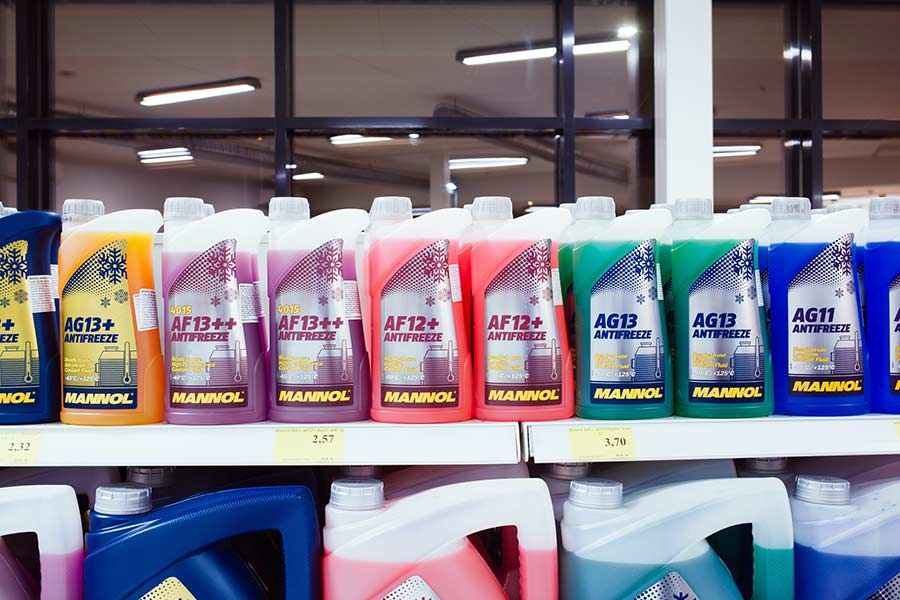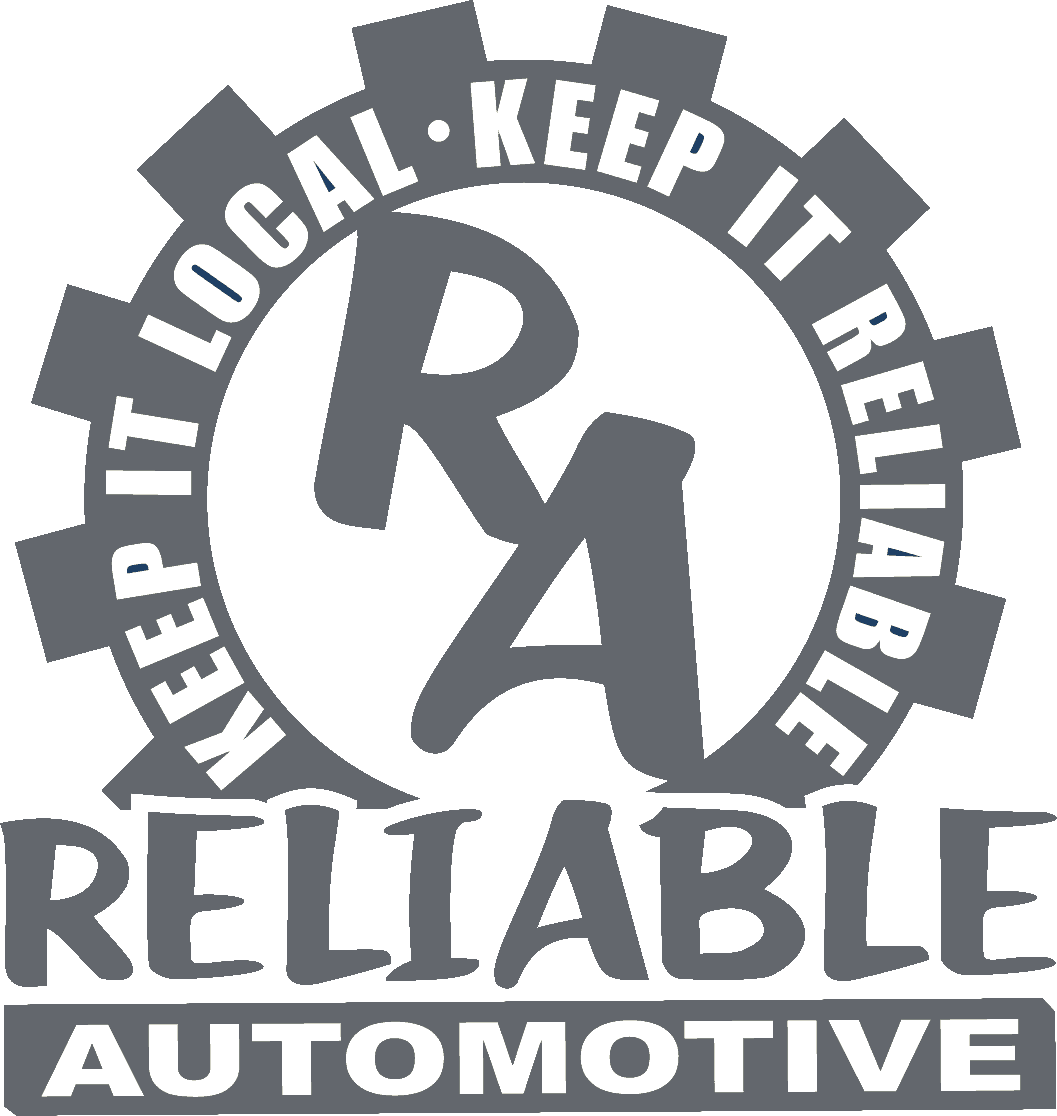
Your engine has to deal with some extreme temperatures every time you drive. Its normal operation produces a huge amount of thermal energy on its own, and the heat of summer only adds to its risk of overheating. At the other extreme, freezing temperatures during the winter can make your engine seize up, causing severe damage and making it unable to run correctly. That’s where coolant and antifreeze come in: they help the radiator keep your engine at a safe operational temperature year round. Vehicle owners often say “coolant” and “antifreeze” interchangeably, but there is a key difference between the two terms that’s important to understand if you want to avoid costly mistakes.
What’s the Difference?
To simplify things, antifreeze is a component of coolant. Coolant is the liquid you put into your vehicle, and it contains antifreeze in addition to water and sometimes other additives. We’ll go more into the details below.
What is Antifreeze?
Antifreeze is a colored liquid that is ethylene glycol-based and does not readily boil or freeze. Antifreeze plays an essential role in regulating engine temperatures and is an important component of the vehicle’s cooling system year-round. Because of its low freezing point and high boiling point, antifreeze remains a liquid at temperatures from -5 degrees below zero up to 275 degrees Fahrenheit. In addition to a high heat transference ability, antifreeze also acts as a lubricant. Thus, it also helps keep various parts of your engine moving smoothly and reduces the friction that causes engine damage.
The color of antifreeze can confuse some. The colors include purple, orange, turquoise, pink, red, green, yellow, and blue. Less common these days is a green type called IAT (Inorganic Acid Technology), which contains phosphate and silicate corrosion deterrents that protect the metal parts in the engine and radiator. IAT is primarily used on vehicles constructed before the mid-1990s. OAT (Organic Acid Technology) is used in newer cars and ranges in color from dark green to, blue, red, bright red, and orange. This type of antifreeze does not contain phosphates or silicates but does contain other added inhibitors for corrosion. The additives help the liquid last longer and prevents corrosion and rust. Also designed for new cars is a mix between OAT and IAT called HOAT (Hybrid Organic Acid Technology). This kind contains silicates that prevent corrosion and increase aluminum parts’ protection. HOAT comes in a variety of colors including purple, blue, pink, turquoise, and yellow.
While antifreeze is an essential part of a vehicle’s cooling system, it can’t do its job alone. That’s where coolant comes in.
What is Coolant?
Coolant is typically a fifty-fifty mix of water and antifreeze, but it can contain up to 70 percent antifreeze in formulas designed for colder temperatures. Water alone cannot regulate an engine’s extreme temperatures, and using antifreeze alone won’t provide the protection a vehicle needs from freezing. Antifreeze freezes at around zero degrees Fahrenheit, but having a fifty-fifty mix of water and antifreeze raises the boiling point to 223 degrees Fahrenheit or higher and a freezing point of 84 degrees below zero. Coolant is always present in the vehicle, even when the engine is off. When the vehicle turns on, the coolant is continuously pumped through the cooling system. It constantly absorbs heat and flows back into the radiator, where the outside air cools it. When the vehicle’s heater turns on, some coolant diverts into the heater’s core, where the coolant warms, and the fan blows the heated air into the vehicle’s interior. Typically, coolant is poured into the vehicle’s coolant reservoir and should be changed every 30,000 to 60,000 miles.
Key Takeaways
Preserving correct coolant levels prevents the engine overheating, freezing, and corroding. Owners should make sure they are using the proper blend, however, as coolant can contain varying types of antifreeze and different amounts of water. While most vehicle owner manuals will instruct owners on the proper care of the engine, the easiest way to make sure your vehicle is getting the proper care is to take it to a trusted mechanic. They will know the best type of coolant for your vehicle and driving conditions.






